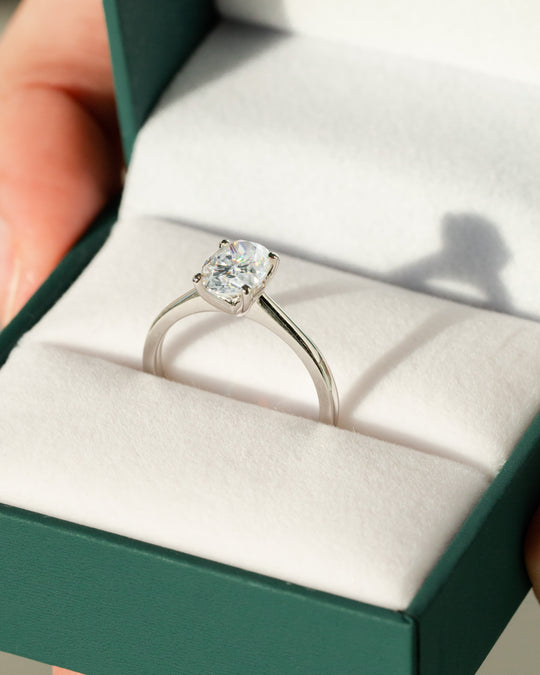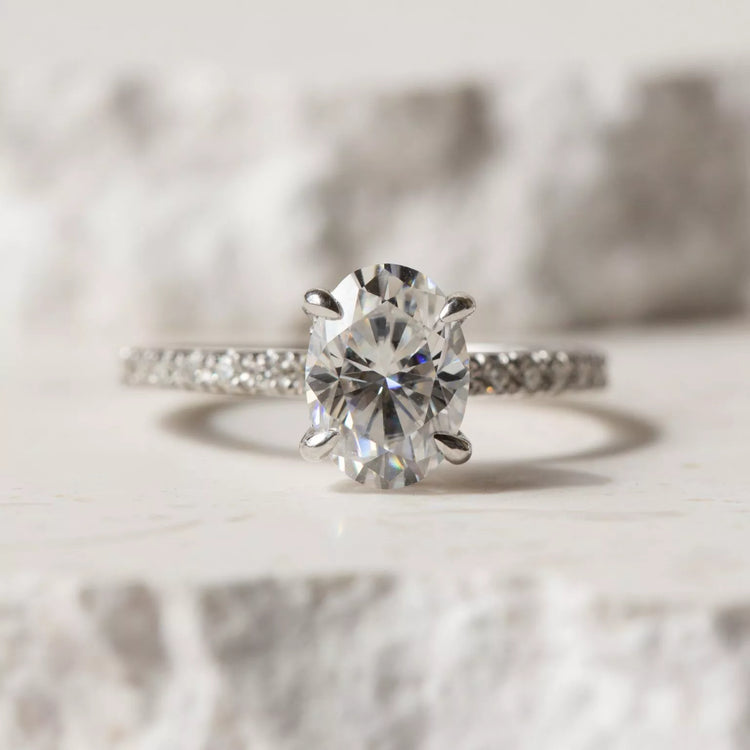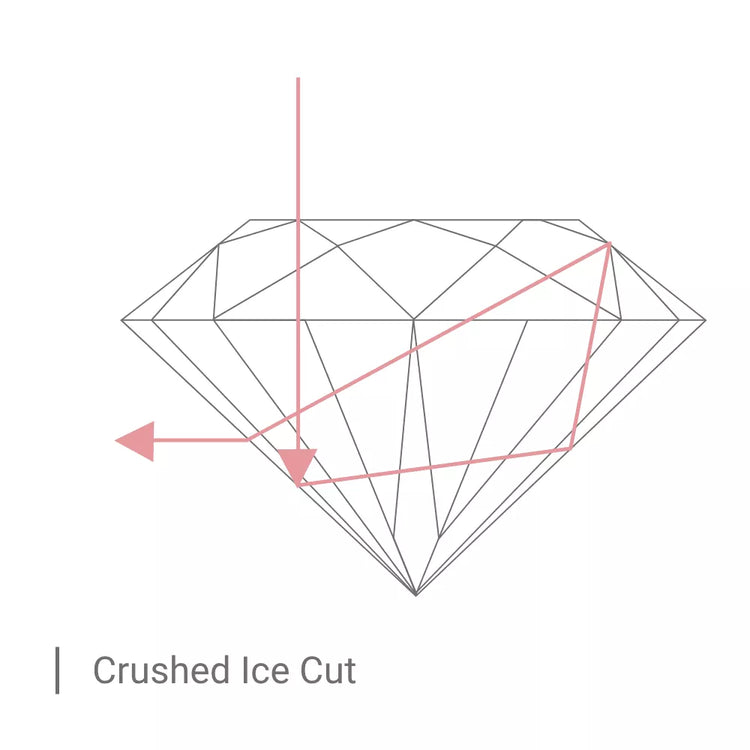
When you picture a gemstone such as a moissanite or a diamond, you’re probably picturing a brilliant cut stone. A sparkling, scintillating stone with regular and symmetrical facets. However, in the world of moissanite, a lesser known style of cut is slowly but surely gaining popularity – Crushed Ice.
Known for its shimmering beauty and distinct difference to the brilliant cut, crushed ice can be a gorgeous alternative. Each cut has properties which noticeably change their appearance and give them their own unique beauty.
To understand the differences, let’s first discover how light interacts with moissanite.
How does light interact with moissanite?
When light enters a substance like moissanite, it refracts and reflects. Gemstones are so sparkly because they are cut in a way that causes the light which enters at the top of the stone to bounce off facets (cut surfaces) within the stone and then reflect back out. The manner in which this light acts, and therefore the overall look of the gemstone, is based on how the stone is cut. The quality of the cut will also effect how the light interacts with the stone, but today we will just focus on the style.


Brilliant Cut
The brilliant cut is the traditional, relatively symmetrical style which causes the classic sparkling pattern. Characteristic of brilliant cut stones are well-defined, arrow-like sparkling facets which can be seen fanning out from the centre of the stone when looking from front-on. They are cut with uniform facets on the pavilion (bottom angle of the stone), which causes light to travel in the most efficient way possible, meaning the most light possible will exit the crown (top angle of the stone) and back to the observer. This causes the highest level of fire and brilliance possible for the stone.
Crushed Ice Cut
Crushed ice cuts are a little different. In a crushed ice moissanite, the stone is cut to have more numerous, irregular shaped facets on the pavilion of the stone, bouncing the light within the stone in an irregular way. This means that although some light will bounce off two surfaces of the pavilion before exiting the crown, as is the case with the brilliant cut, some light will also bounce more times within the stone before exiting through the pavilion, as seen here. As a result, light is shooting in many scattered directions within the stone, causing it to look like – you guessed it – crushed ice. Due to these properties, crushed ice moissanite stones display a different sparkling pattern and a lower level of brilliance, fire and sparkle than a brilliant cut moissanite.


What is the bowtie effect?
An example of the difference seen between these two cuts is seen in certain shapes of moissanite such as oval or pear. Usually, an oval diamond will display some level of a bowtie effect, which is a darker band through the middle width of the stone where light is lost through the pavilion. This can sometimes detract from the stone if it’s too distinct, but can indeed help to give it a certain level of contrast, which some people prefer.
Due to the higher refractive index of moissanite (the way light bends in a substance), brilliant cut oval moissanite stones can usually be cut to avoid this bowtie effect. The faceting pattern of crushed ice moissanite means this cut has more of a bowtie effect – giving it a more diamond-like appearance.
How do they compare?
Due to the efficient use of light, the brilliant cut exacts the most amount of fire and brilliance possible from a moissanite. This unmatched sparkle is the very reason so many people fall in love with moissanite! The brilliant cut shows uniform, larger facets, and will be the most noticeable as a gorgeous, extra sparkly stone. However, for some people, owning a moissanite that matches a diamond as closely as possible is their main goal. This is where the crushed ice cut comes into play, as its faceting pattern displays less fire and brilliance and more smaller, scattered sparkles – a slightly closer match to that of a diamond. In addition, the crushed ice cut can exhibit a bowtie effect, which again will more closely parallel that of a diamond.
Which do you think you prefer? Maybe you want the most sparkle possible? Or the closest possible stone to a diamond? Or maybe you just love the small faceted, scattered sparkle of crushed ice? At the end of the day, it’s completely up to you! Don’t worry about what other people may think, or what you’ve heard you should go for. Choose whatever you fall in love with!
